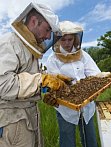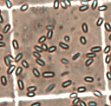Dr. Christopher Mayack
Alexander von Humboldt Post-Doctoral Fellow
http://www.humboldt-foundation.de/web/home.html

Professional Career
- 2012-present Alexander von Humboldt Post-Doctoral Research Fellow, MLU Halle-Wittenberg
- 2012 Post-Doctoral Research Fellow, Colorado State University
- 2011 Teaching Assistant, Introduction to Evolution BZ 220, Colorado State University
- 2008-2011 Teaching Assistant, Biology of Organisms LIFE 103 labs, Colorado State University
- 2007, 2010, 2012 Graduate Research Assistant, Colorado State University
- 2007-2009 Teaching Assistant, Attributes of Life Systems LIFE 102 labs, Colorado State University
- 2005-2006 Teaching Assistant, Biology of Insects 345 labs, State University of New York at Geneseo
- 2004 Teaching Assistant, Contemporary Biology 100 labs, State University of New York at Geneseo
Degrees
- 2012 Ph.D. in Zoology, Colorado State University, USA
- 2007 B.S. in Biology w/Honors, Minor in Chemistry, State University of New York at Geneseo, USA
Research
General research interests: insect physiology, animal behavior, behavioral ecology, parasite-host co-evolution, evolution of social behavior
Specific research interests: After establishing that the primary effect from Nosema ceranae, a microsporidian gut parasite, on its host honeybee (Apis mellifera) is energetic stress, I am now interested in exploring if social animals respond to stress behaviorally and physiologically in a different way in comparison to a solitary animal. Using behavioral ecology and social psychology theory, I am investigating why animals may perform what seems like maladaptive behavioral decisions under energetic stress, such as risky and impulsive behavior, especially when the energetic state of the individual is in conflict with the society in which it lives in. I am also interested in determining whether or not a social animal is more susceptible to starvation while foraging, so I would like to study the regulatory metabolic pathways involved in the transition from solitary to social behavior. Using sweat bees for gene expression comparative work, I plan to investigate the plasticity of the genes involved in responding to starvation in a social animal the honeybee and compare this response with semi-social and solitary bees to see if any fixation has occurred in genes associated with the evolution of social behavior. The changes in physiology associated with social behavior might explain how a social individual may be more likely to seek out food instead of mobilizing fat stores in order to cope with energetic stress. Energetic stress may therefore be a common underlying mechanism to explain the limited dispersal of bees which may be contributing to the world-wide decline of pollinators.
Publications
Mayack C, Naug D (2013) Individual energetic state can supersede social regulation of foraging in honeybees. Behavioral Ecology and Sociobiology 67, 929-936.
Mayack C, Naug D (2011) A changing but not an absolute energy budget dictates risk-sensitive behaviour in the honeybee. Animal Behaviour 82, 595-600.
Martín-Hernández R, Botías C, Barrios L, et al. (2011) Comparison of the energetic stress associated with experimental Nosema ceranae and Nosema apis infection of honeybees (Apis mellifera). Parasitology Research 109, 605-612.
Mayack C, Naug D (2010) Parasitic infection leads to decline in hemolymph sugar levels in honeybee foragers. Journal of Insect Physiology 56, 1572-1575.
Campbell J, Kessler B, Mayack C, Naug D (2010) Behavioral fever in infected honeybees: Parasitic manipulation or coincidental benefit? Parasitology 137, 1487-1491.
Mayack C, Naug D (2009) Energetic stress in the honeybee Apis mellifera from Nosema ceranae infection. Journal of Invertebrate Pathology 100, 185-188.




